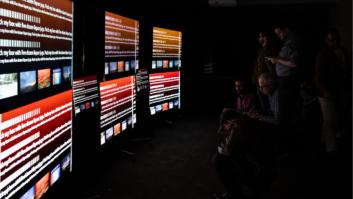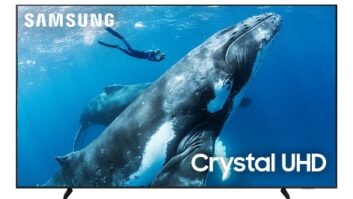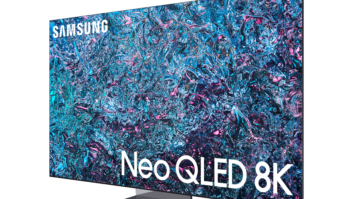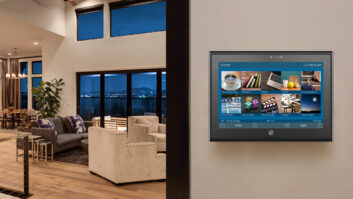As long rumored, Amazon has finally joined the ranks of companies offering small, relatively inexpensive devices that add streaming services and games to any display device with a spare HDMI input and within range of a Wi-Fi or wired broadband connection. Priced at $99, Amazon’s Fire TV will go head to head at the top of the STB fray with the similarly priced AppleTV and Roku 3 (4200X).
Since the Fire TV’s price not only matches the competitors’ top models but is considerably higher than other Roku standard sized models, the recently introduced Roku Streaming Stick and the $35 Chromecast, there will inevitably be questions about what the difference between all these products is and why go with a newcomer rather than an established product. After all, if you’ve seen one streaming box haven’t you seen them all?
Perhaps, but perhaps not. On the technical side, the Amazon Fire TV runs on a quad-core processor that is faster than the rest of the pack, 4x the memory of the others at 2GB (versus 512MB), and has both USB and optical SP-DIF ports. There is both dual-band 802.11 a/b/g/n wireless and a hard-wire Ethernet connection, the latter missing on most of the competitive products priced under $99, but a match to those at that price.
From a convenience perspective, the remote uses Bluetooth making it reasonably competitive with the Wi-Fi Direct remote in the Roku 3 and Streaming Stick and certainly superior to the IR remote supplied with the AppleTV. Chromecast, of course, does not even have a remote as it searches for content via a smartphone or tablet. Fire TV’s remote doesn’t have the headphone jack of the Roku 3, but it does have a built-in mic for use with the Fire TV’s voice control feature for content search. Control apps for iOS and Android platforms are promised, but not yet available to match those available for the Roku units and AppleTV.
The Fire TV’s size and form factor are similar to the competition, other than that the corners are squared off, rather than rounded or radiused. Yes, unlike the odd off-kilter design of the early Boxee Box the top is flat so that you can stack something on top of it. And as we’ll see later, that “something” will likely be an AppleTV or Roku!
When it comes to comparisons between streaming devices, you can look at the specs all day long, but at the end of the day, what often guides which one makes the most sense for you, or for a specific client, is which services and “Channels” it offers. There, Amazon Fire TV acquits itself reasonably well with Netflix, Hulu Plus, WatchESPN, Showtime, Vevo, Pandora, Clear Channel’s I Heart Radio, Bloomberg, and more on the way. There is the ability to use Plex or Amazon Cloud for photo and music streaming, and as you might expect, Amazon’s own Instant Video and Prime Instant Video.
Indeed, that is where the focus is as technology is optimized in such a way that the search engine “anticipates” your preferred content and, in combination with the large cache of on-board memory, is said to load that content almost immediately. The unique voice-controlled search does accommodate other services, but early reports indicate that it does skew toward Amazon content.
The last bucket of content is another area where the memory and processor are put to good use: games. While some games are available through the top line Roku models (none through AppleTV), Fire TV is putting a big stake in the ground on gaming. Not only is there a wide library of games, but for an additional $39.95, you can purchase a game controller that is the real thing, resembling those one wold use with a PlayStation or Xbox. No, the games aren’t to the level of top-tier console games, but then again, they are only $1.99, and remember that Fire TV is a quarter or a fifth the price of the new consoles.
So, where does this leave us? As befits a posting here in the Residential Systems universe, some installation notes. First, note that this product is powered via an external “wall wart” supply, as are the Roku products, not via an internal supply as is the case with AppleTV. Guide accordingly if this is going into a setting where outlets are close spaced. Next, we can’t imagine that anyone would connect this to a TV, AVR or surround processor with anything other than HDMI, but note that if for some reason a separate digital audio connection is available. However, as is also the case with most contemporary streamers, there are no analog video outputs.
Also present on the rear panel is a USB port, as noted above. However, its purpose or future functions have not been revealed at this time. Presuming that it might be used for some sort of ingest of off-line content, the rear panel is not a particularly convenient place. Therefore, we recommend that you use a short USB male-to-female extension so that if this port becomes active in the future, the client doesn’t have to reach around the back of an installation to plug in a USB device.
Features aside, at the end of the day, it comes down to content, content, and content. There, Fire TV doesn’t offer any movie service that the others don’t, but its optimization for the Amazon services may tip the scales in Fire TV’s direction for some. For casual gamers who aren’t interested in the cost of a true game console, the broader game library and the game-centric controller may also tip the scales in its direction.
Yet, for all that Fire TV has, or perhaps does in a better way than the competition, there are also the inevitable down side points against it. First, and not necessarily a knock that pertains only to Fire TV, don’t count on it having everything. At least for now, it lacks some of the more desirable network-based services such as HBO-GO, ABC, and NBC. If you’re a true news junkie like I am, you’ll miss the wide array of news apps on Roku or the ability to get the live feed from the UK’s SkyTV that is available on AppleTV and Roku.
But nothing’s perfect. Want to mirror a web browser’s content from a laptop? For that you’ll need a Chomecast and a Windows or Mac running Chrome or AppleTV with a Mac. Want to go further and mirror anything on your Mac, iPhone or iPad? That requires an AppleTV. Do the kids want to watch a Disney movie such as Frozen for the 100th time? For that you need an AppleTV. Looking for Vudu, M-GO, an incredibly broad array of informational, cooking, religious and way out there apps? That takes a Roku.
This doesn’t mean that Amazon’s new entry isn’t going to find an audience. The virtually instant loading of Amazon-originated content, the voice controller search and particularly the gaming capability do set it apart. It is in a tight market, but it is definitely something that will fill the bill for some.
Just as no one single movie service has every movie you might want to watch, be it a new release or back catalog, no one of these devices has everything that an OTT convert might need to satisfy all of their needs. Why did we mention above that you can stack other products with a similar size footprint on top of the Fire TV? The answer is simple: We suspect that many clients will want, or their needs will require at least two of these, or maybe all three presuming that something else, such as a connected “Smart TV” or Blu-ray player or a game console doesn’t fill in the blank spots for missing content, apps, or services that the stream box doesn’t have.
For the moment, Amazon Fire TV is the “latest and greatest” that some will insist on having you install and others will be well served by your suggesting that they install it even if there is already a Roku, AppleTV, Chromecast, or some other streamer in the system. However, we need to close on a word of caution: Of all the devices we’ve compared Fire TV to, the oldest, though certainly still one of the more capable, is Apple TV. The current platform has seen updates to add more services but the underlying system dates back a few years to the 720p model that we use. The age of the current 1080p model makes one wonder if we’ll be writing an article such as this one about the “amazing new Apple TV set-top” perhaps in the fall, or maybe sooner in June.
Only one thing is for certain: While these small-ish devices do not take up too much rack-space or cabinet room it would be wise to make sure that you have space for two or three of them. Beyond that, make sure that all of your systems have sufficient outlets for new power cords with spacing for “wall warts” and that there is an open HDMI input or two as more of these devices begin to become necessities for viewers demanding that they have access to all manner of OTT content. We suspect you’ll be filling those inputs sooner than later.
And we haven’t even gotten to “4K Streamers” yet…







